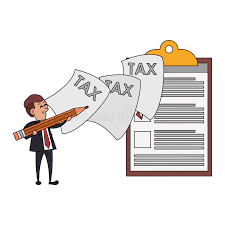
State & Local Gov't Finances Chap 14 Lesson 3
Quiz by Peter Duesterbeck
Feel free to use or edit a copy
includes Teacher and Student dashboards
Measure skillsfrom any curriculum
Measure skills
from any curriculum
Tag the questions with any skills you have. Your dashboard will track each student's mastery of each skill.
With a free account, teachers can
- edit the questions
- save a copy for later
- start a class game
- automatically assign follow-up activities based on students’ scores
- assign as homework
- share a link with colleagues
- print as a bubble sheet
10 questions
Show answers
- Q1The federal government receives the majority of intergovernmental funds from states.FALSETRUE30s
- Q2Only five states—Alaska, Delaware, Montana, New Hampshire, and Oregon—have a general sales tax.TRUEFALSE30s
- Q3All but seven states—Alaska, Florida, Nevada, South Dakota, Texas, Washington, and Wyoming—rely on the individual income tax for revenue.FALSETRUE30s
- Q4The largest category of state spending is education.FALSETRUE`30s
- Q5State governments have primary responsibility for elementary and secondary education.FALSETRUE30s
- Q6States receive most of their intergovernmental revenue funds from ___________ .local governmentspublic utilitiesother state governmentsthe federal government30s
- Q7Which is a major revenue category for state governments?all of the thesefederal spendingcontributions to employment retirement fundssales tax receipts30s
- Q8What do state governments spend the most on?the federal governmenthigher educationwelfarelocal governments30s
- Q9After intergovernmental revenue, the largest source of revenue for local governments is _____________ .income taxfederal grantsstate spendingproperty tax30s
- Q10Which is an example of a natural monopoly?an intergovernmental revenue paymenta city water systemall of thesea balanced budget amendment30s